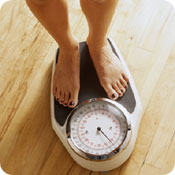
To comprehend why this risk is present, it helps to understand the physical changes that occur during pregnancy:
- The hormones relaxin and estrogen increase, allowing your joints and ligaments to loosen so your body can adapt to the physical changes needed to carry the baby. Unfortunately, this increased laxity makes pregnant women more vulnerable to sprains and strains.
- The body's posture shifts to allow room for the expanding belly
- The inward curve of the lumbar spine is increased, which stretches out the abdominal muscles and tightens the lower back
- Breasts enlarge, causing the shoulders and upper back to begin to round forward.
- The cervical spine is pulled into a head-forward posture.
All of these changes increase the mechanical stress on the back, pelvis, hips, legs, and feet. The hamstrings and quadriceps tighten, knees will hyperextend, calf muscles will tighten, and foot arches fall.
Inside the body, circulatory and thermoregulatory systems are adapting as well. These changes play a role in how intense you can safely exercise:
- Blood volume, resting heart rate, and cardiac output all increase to ensure the fetus gets adequate blood supply.
- Pregnant women will reach a target heart rate much sooner than their pre-pregnancy state.
- Sweating will occur more quickly to help dissipate heat, due to the increase in peripheral blood flow.
- Hormonal increases hinder carbon dioxide tolerance, which can cause shortness of breath and hyperventilation more easily.
The combination of these factors, along with pregnancy-related fatigue, must be considered because they can all put women at risk for injury during exercise.
Typical pain and injuries can be prevented or alleviated through proper workouts. For example, sciatica can be prevented through stretching the hamstrings and doing pelvic tilts; leg cramps can be prevented and relieved with calve stretches. Pain and spasms in the round ligaments (connective tissue connecting the pubic bones) can be aggravated by certain exercises, like movement of one leg, but pelvic tilts on all fours or bridging exercises can help.
Read "Injury Prevention in Pregnancy Part II: Practical Methods" to learn how to exercise correctly to avoid pain and injury.
(During pregnancy, you should not rely on heart rate to judge how hard you're working. You should be using the Rate of Perceived Exertion (RPE) Scale, also called the Modified Borg Scale.)
| 






Member Comments